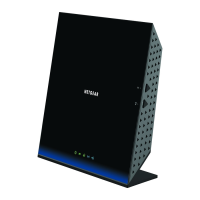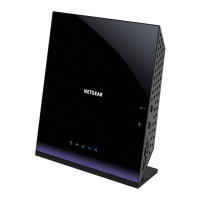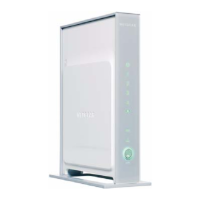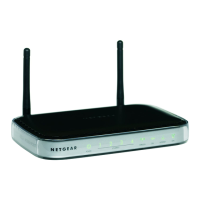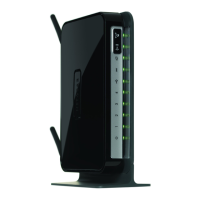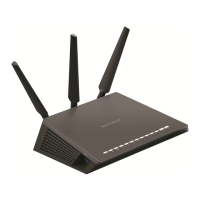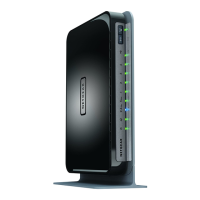To make a local web server public:
1. Assign your web server either a fixed IP address or a dynamic IP address using DHCP address
reservation.
In this example, your modem router always gives your web server an IP address of 192.168.0.33.
2. On the Port Forwarding / Port Triggering page, configure the modem router to forward the HTTP service
to the local address of your web server at 192.168.0.33.
HTTP (port 80) is the standard protocol for web servers.
3. (Optional) Register a host name with a Dynamic DNS service, and specify that name on the Dynamic
DNS page of the modem router.
Dynamic DNS makes it much easier to access a server from the Internet because you can enter the
name in the web browser. Otherwise, you must know the IP address that the ISP assigned, which
typically changes.
How the Modem Router Implements the Port Forwarding Rule
The following sequence shows the effects of a port forwarding rule:
1. When you enter the URL www.example.com in your browser, the browser sends a web page request
message with the following destination information:
• Destination address.The IP address of www.example.com, which is the address of your modem
router.
• Destination port number. 80, which is the standard port number for a web server process.
2. The modem router receives the message and finds your port forwarding rule for incoming port 80 traffic.
3. The modem router changes the destination IP address in the message to 192.168.0.123 and sends the
message to that computer.
4. Your web server at IP address 192.168.0.123 receives the request and sends a reply message to your
modem router.
5. Your modem router performs Network Address Translation (NAT) on the source IP address and sends
the reply through the Internet to the WiFi-enabled computer or mobile device device that sent the web
page request.
Manage Port Triggering for Services and Applications
Port triggering is a dynamic extension of port forwarding that is useful in these cases:
• An application must use port forwarding to more than one local computer (but not simultaneously).
• An application must open incoming ports that are different from the outgoing port.
With port triggering, the modem router monitors traffic to the Internet from an outbound “trigger” port that
you specify. For outbound traffic from that port, the modem router saves the IP address of the computer
that sent the traffic.The modem router temporarily opens the incoming port or ports that you specify in your
rule and forwards that incoming traffic to that destination.
Manage Port Forwarding and Port Triggering
243
AC1200 WiFi VDSL/ADSL Modem Router Model D6220

